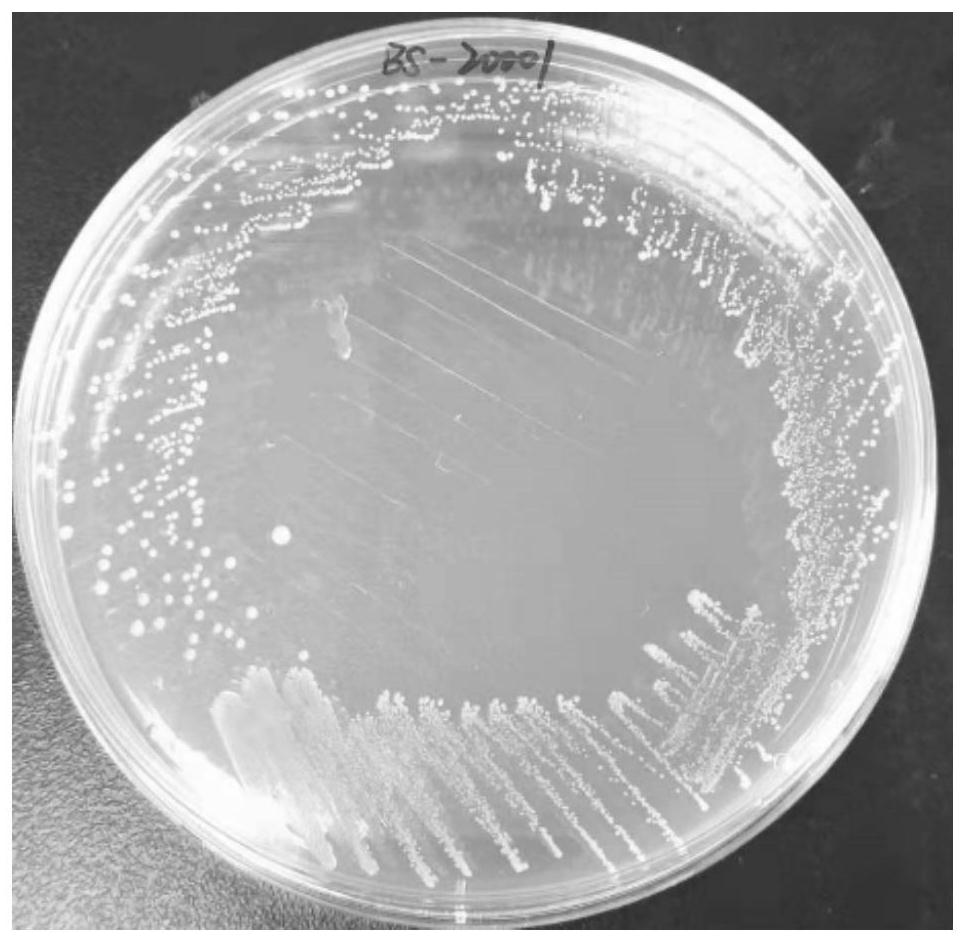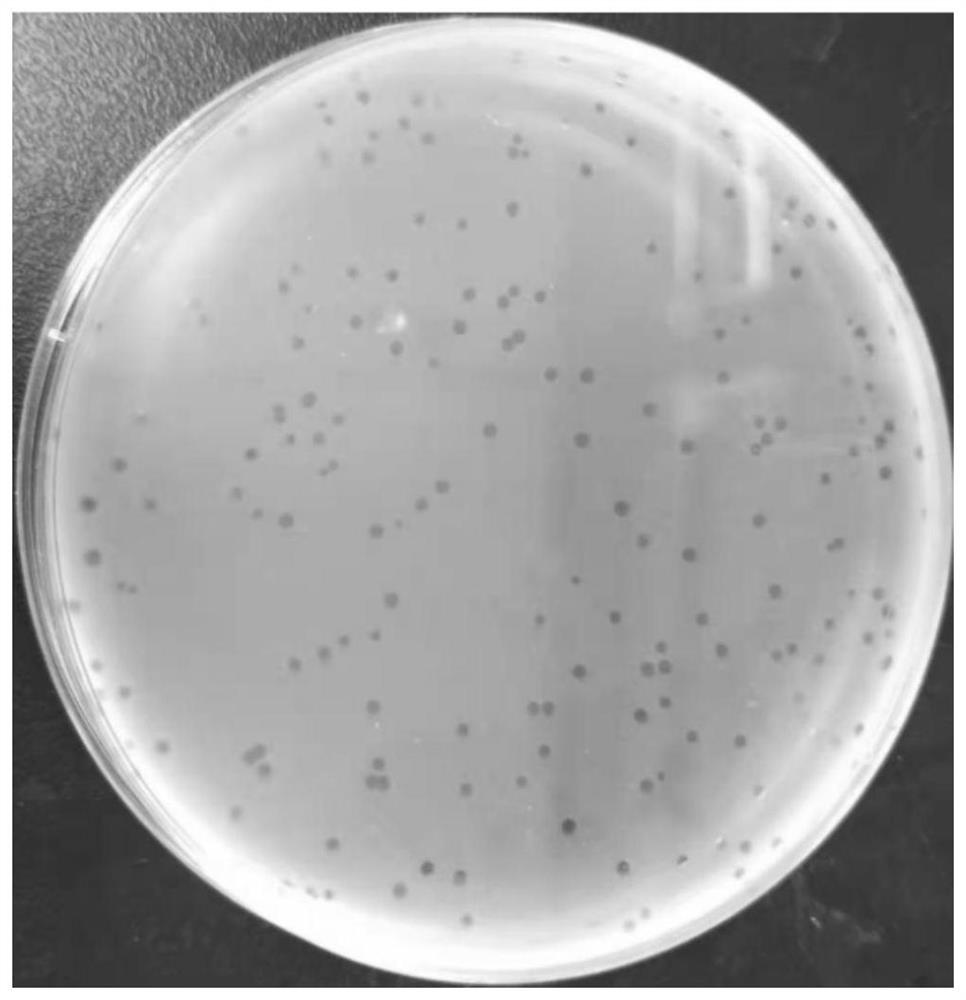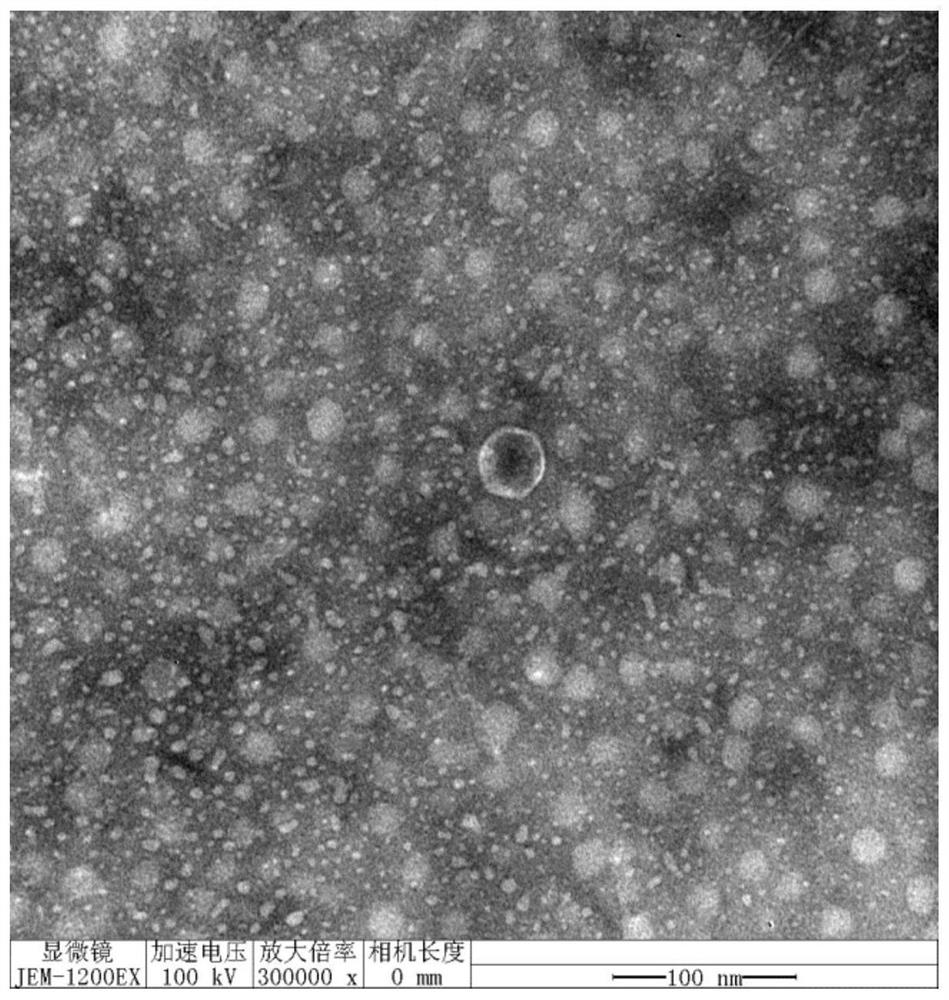A strong lytic Staphylococcus aureus phage rdp-sr-20001 and its application
A technology of RDP-SR-20001 and Staphylococcus, which is applied in the direction of bacteriophage, virus/phage, medical raw materials derived from virus/phage, etc., can solve the problems of ineffective medication and untimely treatment, and achieve the effect of treating pollution
- Summary
- Abstract
- Description
- Claims
- Application Information
AI Technical Summary
Problems solved by technology
Method used
Image
Examples
Embodiment 1
[0031] Embodiment 1 Isolation and Identification of Pathogenic Staphylococcus aureus BS-20001
[0032] Sampling from diseased farms, aseptically take joint exudate, liver and spleen of diseased chickens, streak on BHI medium, culture at 37°C for 24-48 hours, then perform Gram staining and microscope observation on the bacteria growing on the plate , for Gram-positive cocci colonies were streaked and purified again, and the above steps were repeated 3 times until colonies with uniform size and shape were grown, then a single colony was picked and inoculated in 5mL LB broth, 37°C 200rpm Shake culture for 10 h to obtain a uniform turbid bacterial suspension. Through biochemical identification and 16sRNA molecular identification, it was determined to be pathogenic Staphylococcus aureus, and one of them was named BS-20001 (refer to figure 1 shown), and stored in a -80°C refrigerator.
Embodiment 2
[0033] Example 2 Isolation and Identification of Staphylococcus aureus Phage RDP-SR-20001
[0034] (1) Sewage treatment: Take sewage from the farm, filter the collected sewage samples with multi-layer gauze, then place the filtrate at 4°C for 10,000×g centrifugation for 15 minutes, and use a disposable filter with a pore size of 0.22 μm on the top The clear liquid was filtered, and the filtrate was placed at 4°C for later use;
[0035] (2) Preparation of mixed bacterial suspension: Take 0.2 mL of bacterial suspension and 1 mL of filtrate and add it to 5 mL of LB broth, culture overnight at 37°C with shaking at 200 rpm, then centrifuge at 10,000 rpm for 5 min, and pass the supernatant through a 0.22 μm filter. The filtrate is used for later use.
[0036](3) Separation of bacteriophages: Separation of phages was carried out using the double-plate method. After mixing 0.1mL of the filtrate of the mixed bacterial suspension and 0.2mL of Staphylococcus aureus BS-20001, they were p...
Embodiment 3
[0039] Electron microscope observation of embodiment 3 phage
[0040] Phages were treated with phosphotungstic acid negative staining method: take 100 μL of purified and proliferated phages, drop them on paraffin sheets, place the film side of the copper mesh on the phage droplet, and remove the copper mesh from the droplet after 10 minutes Put it on a clean filter paper, let it dry for 3 minutes, add a drop of 2% phosphotungstic acid (PTA) on the copper grid to stain the phage for 10 minutes, then use the filter paper to absorb the staining solution from the side, and observe the shape of the phage with an electron microscope after the sample is dry .
[0041] Depend on image 3 It can be seen that the head of phage RDP-SR-20001 is a regular polyhedron structure with a diameter of about 41nm and no tail; according to the ninth report of the International Virus Taxonomy Organization on the Classification of Viruses, the morphology of the phage conforms to the characteristics ...
PUM
| Property | Measurement | Unit |
|---|---|---|
| diameter | aaaaa | aaaaa |
| diameter | aaaaa | aaaaa |
Abstract
Description
Claims
Application Information
 Login to View More
Login to View More - R&D
- Intellectual Property
- Life Sciences
- Materials
- Tech Scout
- Unparalleled Data Quality
- Higher Quality Content
- 60% Fewer Hallucinations
Browse by: Latest US Patents, China's latest patents, Technical Efficacy Thesaurus, Application Domain, Technology Topic, Popular Technical Reports.
© 2025 PatSnap. All rights reserved.Legal|Privacy policy|Modern Slavery Act Transparency Statement|Sitemap|About US| Contact US: help@patsnap.com



